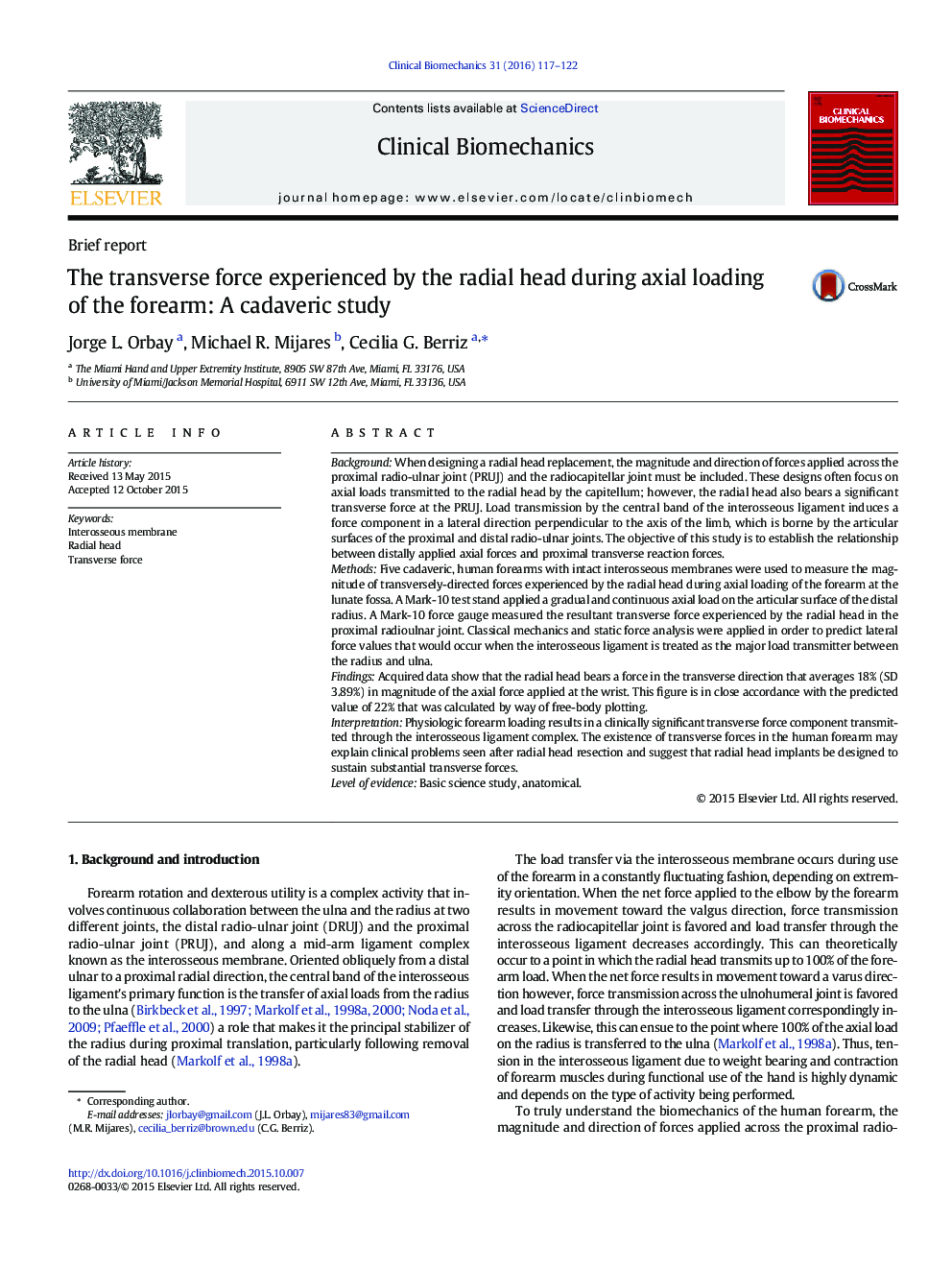| Article ID | Journal | Published Year | Pages | File Type |
|---|---|---|---|---|
| 4050178 | Clinical Biomechanics | 2016 | 6 Pages |
•Physiologic forearm loading results in a significant transverse force component.•The radial head bears transverse force at 18% of axially-applied wrist force.•Transverse forearm forces result from tension in the interosseous ligament.•Need to consider substantial transverse force when designing radial head implants
BackgroundWhen designing a radial head replacement, the magnitude and direction of forces applied across the proximal radio-ulnar joint (PRUJ) and the radiocapitellar joint must be included. These designs often focus on axial loads transmitted to the radial head by the capitellum; however, the radial head also bears a significant transverse force at the PRUJ. Load transmission by the central band of the interosseous ligament induces a force component in a lateral direction perpendicular to the axis of the limb, which is borne by the articular surfaces of the proximal and distal radio-ulnar joints. The objective of this study is to establish the relationship between distally applied axial forces and proximal transverse reaction forces.MethodsFive cadaveric, human forearms with intact interosseous membranes were used to measure the magnitude of transversely-directed forces experienced by the radial head during axial loading of the forearm at the lunate fossa. A Mark-10 test stand applied a gradual and continuous axial load on the articular surface of the distal radius. A Mark-10 force gauge measured the resultant transverse force experienced by the radial head in the proximal radioulnar joint. Classical mechanics and static force analysis were applied in order to predict lateral force values that would occur when the interosseous ligament is treated as the major load transmitter between the radius and ulna.FindingsAcquired data show that the radial head bears a force in the transverse direction that averages 18% (SD 3.89%) in magnitude of the axial force applied at the wrist. This figure is in close accordance with the predicted value of 22% that was calculated by way of free-body plotting.InterpretationPhysiologic forearm loading results in a clinically significant transverse force component transmitted through the interosseous ligament complex. The existence of transverse forces in the human forearm may explain clinical problems seen after radial head resection and suggest that radial head implants be designed to sustain substantial transverse forces.Level of evidenceBasic science study, anatomical.
